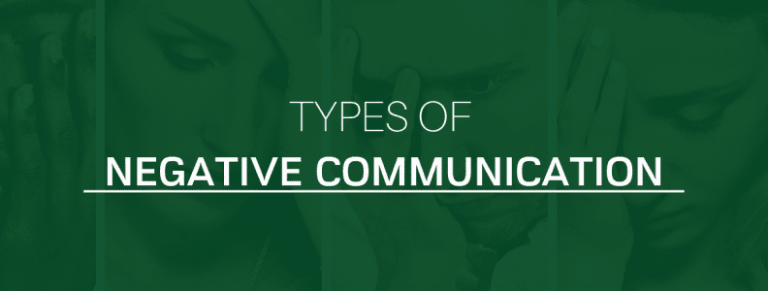Elbow Touching Body Language
If you’re curious about the secret messages our bodies send without even saying a word, you’ve come to the right place. Today, let’s dive into the fascinating world of body language with a focus on the intriguing phenomenon of “elbow touching”. Have you ever wondered what it means when someone touches their elbow? Well, get ready to uncover the hidden messages and meanings behind this common gesture.
Body language is like a secret code that reveals what someone is thinking or feeling. It’s the unspoken communication that happens through our gestures, postures, and facial expressions. And one of these intriguing nonverbal cues is when someone touches their elbow. It may seem like a simple action, but it can convey a lot more than meets the eye.
So, what does it mean when someone touches their elbow? Is it a sign of discomfort, confidence, or something else entirely? In this article, we’ll explore the different interpretations of this body language and uncover the hidden messages behind the seemingly innocent act of elbow touching. Get ready to decode the silent language of the human body and discover a whole new way of understanding the people around you!
Elbow Touching Body Language: Decoding Nonverbal Communication
In the world of nonverbal communication, every touch, gesture, and movement conveys a message. One such intriguing form of body language is the act of elbow touching. Whether intentional or subconscious, elbow touching can reveal important clues about a person’s emotions, intentions, and level of comfort. In this article, we delve into the fascinating world of elbow touching body language and explore its various meanings and interpretations.
Elbow Touching as a Sign of Support and Connection
When two individuals engage in elbow touching, it often signifies a strong bond and support between them. This gesture conveys closeness and a desire to connect on a deeper level. It is frequently observed among close friends, family members, and romantic partners. The act of elbow touching creates a physical connection that fosters emotional intimacy and reassurance. It serves as a nonverbal way of saying, “I am here for you” or “You can count on me.”
In professional settings, elbow touching can also be used as a supportive gesture. Colleagues or mentors may touch elbows to offer encouragement or comfort in challenging situations. This subtle nonverbal cue shows solidarity and promotes a sense of camaraderie.
Moreover, elbow touching in certain cultural contexts may have different meanings. It is essential to consider cultural norms and practices to accurately interpret the message behind the gesture.
Elbow Touching and Personal Boundaries
While elbow touching can symbolize connection and support, it is crucial to be mindful of personal boundaries when interpreting this body language. Every individual has their own comfort level when it comes to physical touch. When someone initiates elbow touching, it is essential to consider the context and the relationship between the individuals involved.
In some cases, elbow touching may indicate a disregard for personal boundaries or an attempt at dominance. Individuals who consistently invade personal space through elbow touching may be trying to assert power or control. It is necessary to be aware of such behaviors and set clear boundaries to maintain personal comfort and safety.
On the other hand, individuals who instinctively pull away or show discomfort when their elbow is touched may indicate a need for more personal space or a potential lack of trust. It is crucial to respect these boundaries and establish open communication to foster a healthy relationship.
Elbow Touching in Different Contexts
Elbow touching can have various meanings depending on the context in which it occurs. Let’s explore some scenarios where elbow touching is prevalent:
1. Romantic Relationships
In romantic relationships, elbow touching becomes an intimate gesture that signifies love, affection, and desire. Couples often engage in elbow touching during moments of tenderness, such as cuddling or whispered conversations, as a way to strengthen their bond.
Elbow touching can also be used as a playful gesture, teasingly nudging or lightly touching each other’s elbows. It adds a sense of flirtation and close connection to the relationship.
However, it is crucial to note that every individual has their own comfort levels and boundaries when it comes to physical touch. It is essential to have open communication and respect each other’s boundaries to create a safe and comfortable environment.
2. Professional Settings
In professional settings, elbow touching can convey respect, support, and camaraderie among colleagues. It can be seen during team-building exercises, celebrations, or moments of achievement when individuals come together to celebrate success.
Elbow touching is also observed in professional mentorship relationships. Mentors may touch elbows with their mentees as a way of guiding and supporting them. This gesture fosters a sense of trust and shared goals within the mentorship dynamic.
3. Cultural Differences
It is important to note that the interpretation of elbow touching can vary across cultures. In some cultures, physical touch is more acceptable and prevalent, while in others, it may be considered inappropriate or invasive. Understanding cultural norms is crucial to avoid misinterpretation or discomfort.
The Power of Nonverbal Communication
Nonverbal communication, including body language and gestures like elbow touching, plays a significant role in our daily interactions. It adds another layer of meaning and depth to our conversations, often conveying emotions and intentions more effectively than words alone. By understanding and interpreting the subtle cues of body language, we can enhance our communication skills, build stronger connections, and foster healthier relationships.
Tips for Interpreting Elbow Touching Body Language
- Pay attention to the context: Consider the relationship between the individuals and the overall situation to accurately interpret the meaning behind elbow touching.
- Be aware of personal boundaries: Respect personal comfort levels and set clear boundaries when engaging in or interpreting elbow touching.
- Consider cultural norms: Understand that elbow touching may have different meanings in different cultures, so it is essential to be culturally sensitive and aware.
The Impact of Elbow Touching Body Language
Elbow touching body language can have a significant impact on our relationships and interactions. It can foster closeness, support, and trust, but it can also be misinterpreted or intrude upon personal boundaries. By understanding the nuances of elbow touching and being mindful of its implications, we can navigate nonverbal communication more effectively and build stronger connections with those around us.
Key Takeaways: Elbow Touching Body Language
2. When someone’s elbow is touching their body, it may suggest nervousness or insecurity.
3. Elbow touching can also be a sign of closed-off body language and a lack of openness.
4. Pay attention to the context and other body language cues to better interpret the meaning behind elbow touching.
5. Remember that body language is not always straightforward and can vary from person to person.
Frequently Asked Questions
Welcome to our FAQ section on “elbow touching body language”! In this section, we will address common questions related to the topic and provide detailed answers. Whether you’re curious about the meaning behind it or its significance in communication, we’ve got you covered!
1. What does it mean when someone touches their elbow while speaking?
When someone touches their elbow while speaking, it often indicates discomfort or uneasiness. This gesture can be a form of self-soothing or a subconscious attempt to create a physical barrier. It may suggest that the person is feeling insecure or anxious in the current conversation.
On the other hand, touching the elbow can also be a cultural or personal habit without any specific meaning. It’s essential to consider other nonverbal cues and the context of the situation for a more accurate interpretation.
2. Is elbow touching body language always negative?
No, elbow touching body language is not always negative. While it can indicate discomfort or unease, it’s essential to consider other cues and the context of the situation before making conclusions. Some people may have a habit of touching their elbow without any specific meaning behind it.
Instead of focusing solely on the elbow touching gesture, pay attention to other nonverbal cues, such as facial expressions, body posture, and hand movements, to get a more comprehensive understanding of the person’s emotions and intentions.
3. Can elbow touching body language be a form of self-soothing?
Yes, elbow touching can be a form of self-soothing. When someone feels anxious or uncomfortable, they may unconsciously touch their elbow as a way to provide comfort and regulate their emotions. This self-soothing gesture can help to alleviate stress or anxiety in a stressful situation.
However, it’s important to note that self-soothing can manifest differently in individuals, and elbow touching may not be the only self-soothing gesture someone displays. Other common self-soothing behaviors include touching the face, playing with hair, or crossing arms.
4. Can elbow touching body language vary across cultures?
Yes, body language, including elbow touching, can vary across different cultures. Gestures may carry different meanings and interpretations in various cultural contexts. While elbow touching may indicate discomfort in one culture, it can be a normal gesture in another.
If you’re interacting with individuals from different cultural backgrounds, it’s important to be aware of these differences and avoid making assumptions based solely on body language. Instead, be open to learning about and understanding the cultural norms and practices of those you are communicating with.
5. How can I interpret elbow touching body language accurately?
To interpret elbow touching body language accurately, it’s crucial to consider the context, observe other nonverbal cues, and take into account individual differences. Pay attention to the person’s facial expressions, body posture, and other gestures that accompany the elbow touching.
Additionally, consider the situation at hand. Is there anything happening that could be causing discomfort or anxiety? By gathering information from various sources and being mindful of cultural differences, you can develop a more accurate interpretation of elbow touching body language.
People Touch My Arm (Attraction?) – Body Language Secrets
Summary
When someone touches their elbow, it often means they are feeling uncomfortable or nervous. People may cross their arms and touch their elbows to create a barrier and protect themselves. This body language can show that they are not open to conversation or interaction.
On the other hand, when someone touches another person’s elbow, it can be a sign of affection or comfort. It shows that they care about the other person and want to offer support. This gesture is often seen among close friends, family members, or romantic partners.
Understanding the meaning behind elbow touching can help us better interpret someone’s emotions and intentions. It reminds us to be mindful of our own body language and consider how our actions may affect those around us.



